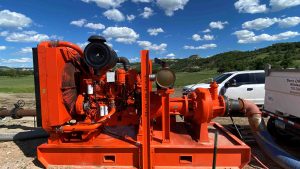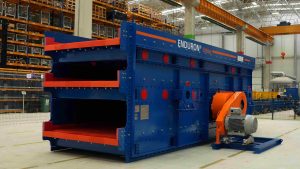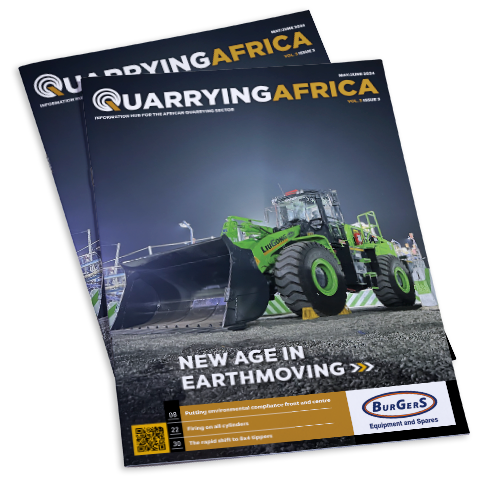Having endured tough market conditions for several years, exacerbated by the recent Covid-19 pandemic, Pietermaritzburg (PMB) Quarry has seen a change of business fortunes, recording double-digit year-on-year sales growth over the past two years.
This has largely been driven by a diversified project base in the area, ranging from national and municipal road projects to private sector real estate developments, says works manager Ernest Sebeelo tells Quarrying Africa.
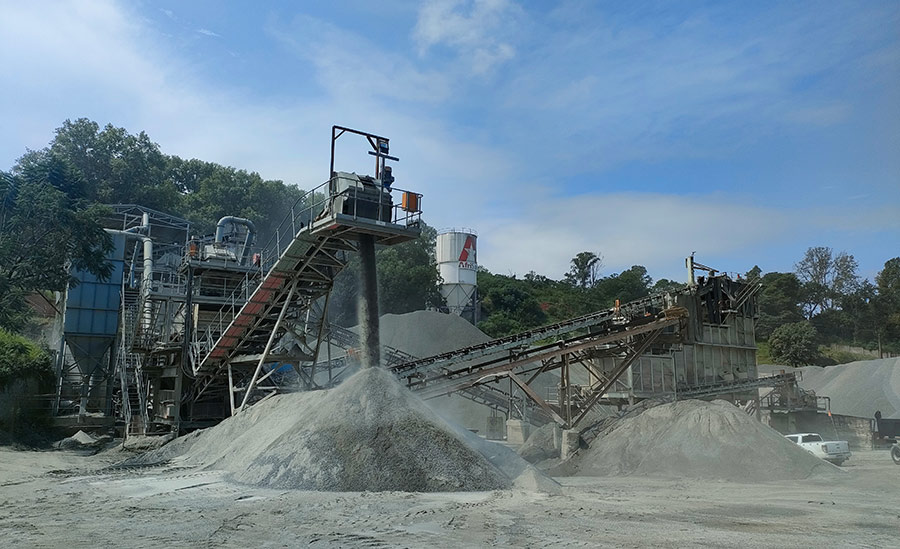
Projects of note
A project of note in the area is the 80-km N3 road upgrade between Durban and Pietermaritzburg. Part of government’s 62 Strategic Integrated Projects (SIPs) gazetted as part of the Infrastructure Investment Plan approved by Cabinet in 2020, the project comprises 14 packages estimated to be worth in excess of R20-billion.
Aimed at strengthening the logistics and transport corridor between South Africa’s main industrial hubs, Johannesburg and Durban, the project will also improve access to Durban’s export and import facilities and raise efficiency along the corridor.
While the current package – the stretch between the Dardanellas Interchange and the Lynnfield Park Interchange – is located some 30-40 km away from PMB Quarry, the operation has already supplied considerable volumes of G2, G4 and G5 products to the project.
In addition, municipal road projects in the KwaZulu-Natal capital have contributed to an increased demand for aggregates. This comes on the back of the KwaZulu-Natal Department of Transport’s commitment to upgrade 183 km of the provincial roads network in the 2022/2023 financial year. As part of this commitment, several multimillion-rand municipal road upgrade and rehabilitation projects have come to market.
“Apart from ongoing national and municipal road upgrades, we are supplying a diverse range of projects, including community developments, low-cost housing and student accommodation projects in the area. We have also experienced increased demand from concrete products manufacturers (CPMs) and asphalt producers servicing road contractors in the area,” says Sebeelo.
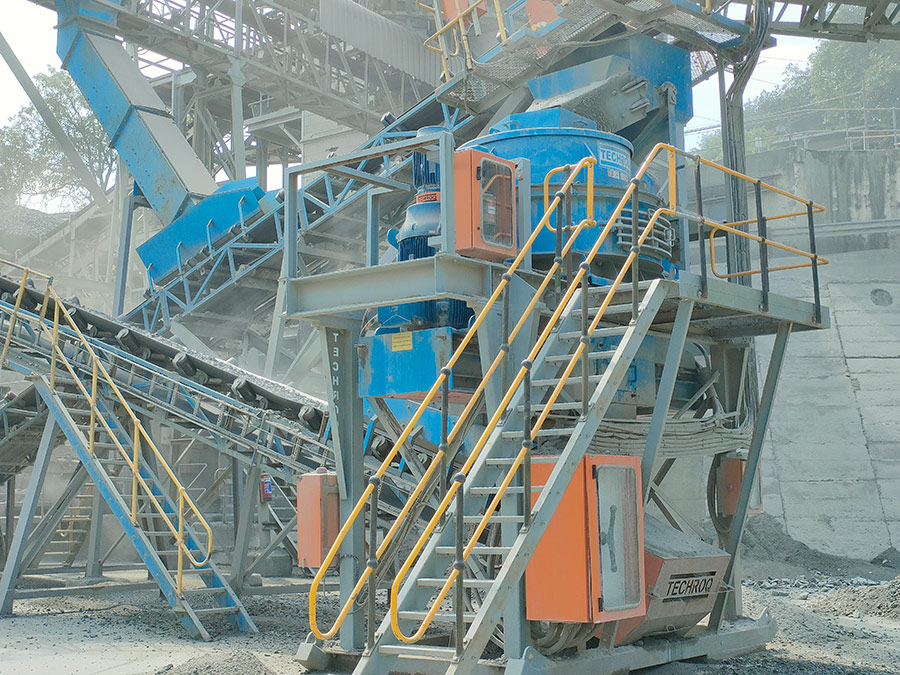
Plant upgrades
In anticipation of the projected rise in demand, especially on the back of the N3 road upgrade, AfriSam embarked on plant upgrades to ensure reliability of supply. The quarry operates three plants – A Primary Plant, Tertiary Plant and B Primary Plant. The B plant produces G products, while the A plant produces the road and concrete stone products, among others.
Due to the geological characteristics of the dolerite rock found at PMB Quarry, the operation has been challenged with its primary jaw crusher at A Primary Plant. To provide context, an existing jaw had to be replaced in 2016, following a broken swing stock shaft. In 2018, the new jaw crusher installed in 2016, develop cracks to its main frame and substructure.
Post various engineering investigations, structural modifications were implemented through Finite Element Analysis to design a new under structure. A Nordberg C120 jaw crusher from Metso was selected due to the crusher’s dampening characteristics supporting complex dynamic and static loadings. Supplied by Pilot Crushtec International, the new jaw was commissioned in December 2021, and has thus far risen to the challenge and proven to be the perfect fit for the application.
To meet high demand for sand, PMB Quarry invested in a vertical shaft impactor (VSI) for its Tertiary Plant in 2020. Supplied by Techroq, the VSI has increased sand production significantly.
“We previously had a challenge with sand production on site, with demand outstripping production capacity. With the new VSI, we are able to generate more sand than conventional crushing and screening. In fact, the VSI installation has resulted in a substantial increase in sand throughput,” explains Sebeelo.
In addition, the VSI provides the much-needed flexibility to produce specific base products. An added advantage when producing G2 is the VSI’s ability to improve the flakiness index. If the market requirements for G2 increases, the quarry is now able to manufacture this product on the Tertiary Plant, complementing the current B plant production.
“As far back as 2017, we were aware of the planned N3 road upgrades and these plant upgrades were in preparation for these and other projects in the area. We have therefore created enough capacity to manage the aggregates demand,” he adds.
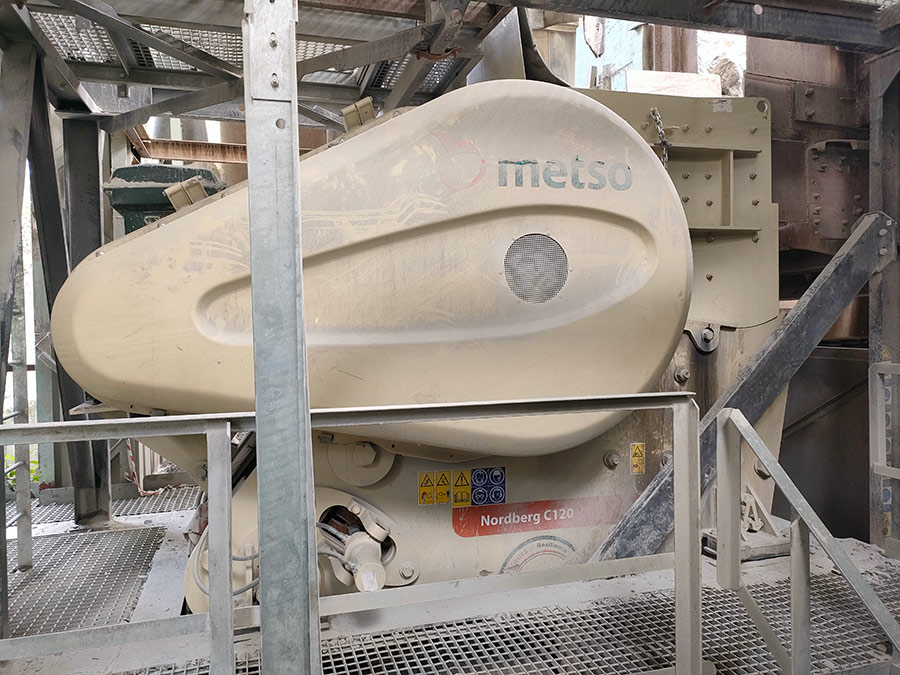
Operations in detail
Located some 8 km from the Pietermaritzburg CBD, PMB Quarry mines a dolerite material. From the dolerite rock, the quarry processes several material sizes including unwashed crusher sand, 10-mm concrete stone, 14-mm road stone, 20-mm concrete stone, 28-mm concrete stone, ballast for the rail sector (53-mm stone), gabion and two base materials (G5 and G2).
Production starts with drilling and blasting in the pit. This function has been outsourced to leading KwaZulu-Natal-based drilling and blasting contractor, Brauteseth Drilling and Blasting. Given the challenging geology in the quarry, which is characterised by blocks of fractured rock, the quarry is challenged with big boulders in its blasts. This calls for secondary mechanical breaking using an excavator which has a hammer attachment.
“In the quest to improve fragmentation, we have previously tested stemming plugs with no marked success. Blasting reports showed no significant improvement in fragmentation. However, we are investigating other options on a different mining level to see if we can achieve different results, using information learnt from other AfriSam quarries which have successfully implemented this technology,” says Sebeelo.
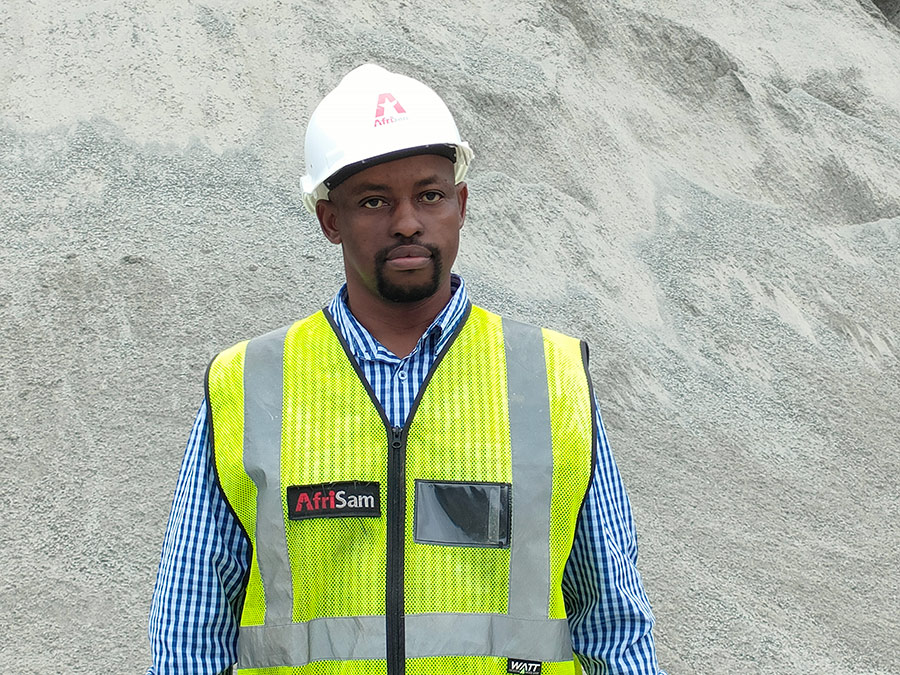
Community issues
With two townships (Copsville and Panorama) and a suburb (Orient Heights) within close proximity of the quarry, managing issues such as blast vibrations and noise are of great importance to Sebeelo and his team at PMB Quarry.
“We have traditionally had issues with dust emissions to Panorama Gardens, with dust generated by mine operational activities such material handling, crushing and screening and vehicles movement. Dust generated in this manner is carried on both light and strong winds (Katabatic breezes and Berg winds). Under Katabatic conditions, dust rises into the atmosphere and is trapped under the inversion layer and the inversion layer lowers in the evening with this dust drifting down the valley and settling in Panorama Gardens. Under Berg wind, dust will be generated when wind speeds are high to lift dust from the exposed surfaces and be carried down.
“The mine implemented additional measures to improve our dust management plan. The dust management involved installation of a dust extraction system, replacement of old dust suppression spray nozzles with mist spray nozzles, installation of conveyor belt curtains to clad the screen tower and additional water carts dedicated for supressing dust generated from the haul roads product stockpiles,” says Sebeelo.
Noise has previously been a problem for Orient Heights, which is located some 250 m from the A Primary Plant. “The noise from the jaw has traditionally presented challenges, however this has been overcome by installing cladding to mitigate both noise and dust,” says Sebeelo.
A new property development, Surrey Park, which is set to be built some 100 m from the pit, will likely pose dust and blast vibration challenges for the quarry. AfriSam has, however, implemented modern blasting techniques and technology to mitigate the risks of encroachments.
“We have made several advances so as to improve the blast designs, timing modification and other blasting optimisation measures to mitigate the negative effects of blasting. We have also installed blast vibration monitors at strategically selected points in order to closely monitor each and every blast,” concludes Sebeelo.
The ground vibration data recorded low PPV’s at all measuring points and all the values were below the conservative limit of 12,75 mm/s. Therefore, there will be no risk of damages to any structure due to ground vibration.

